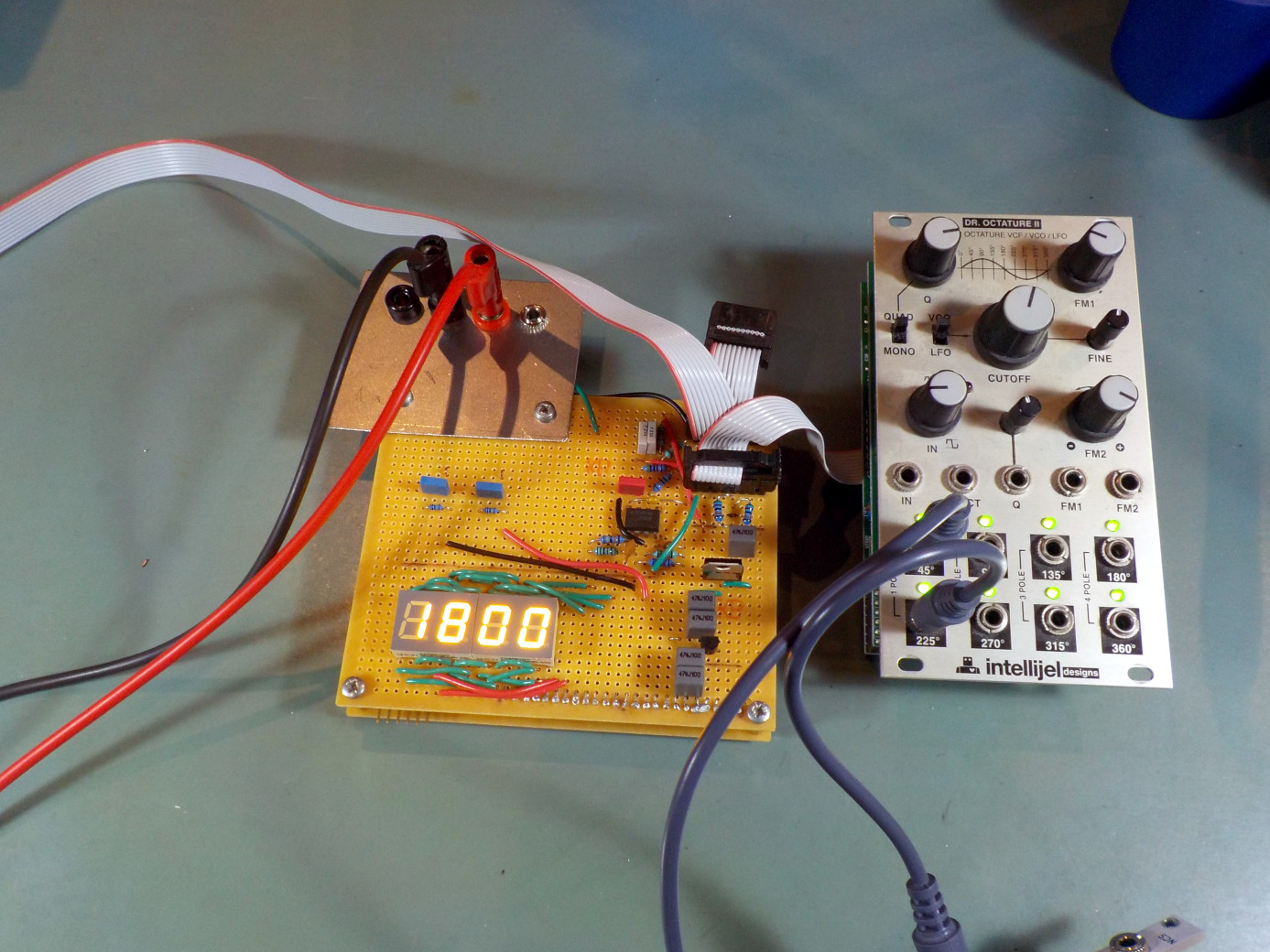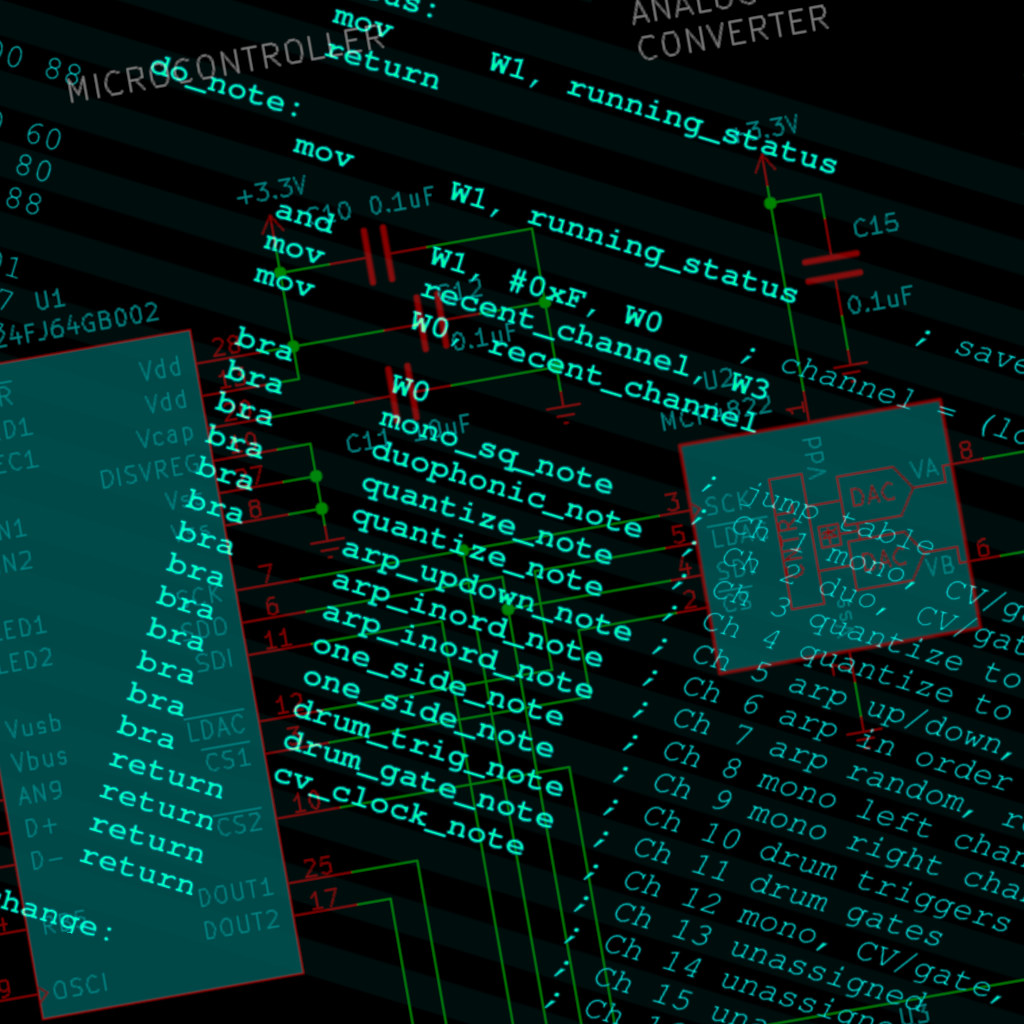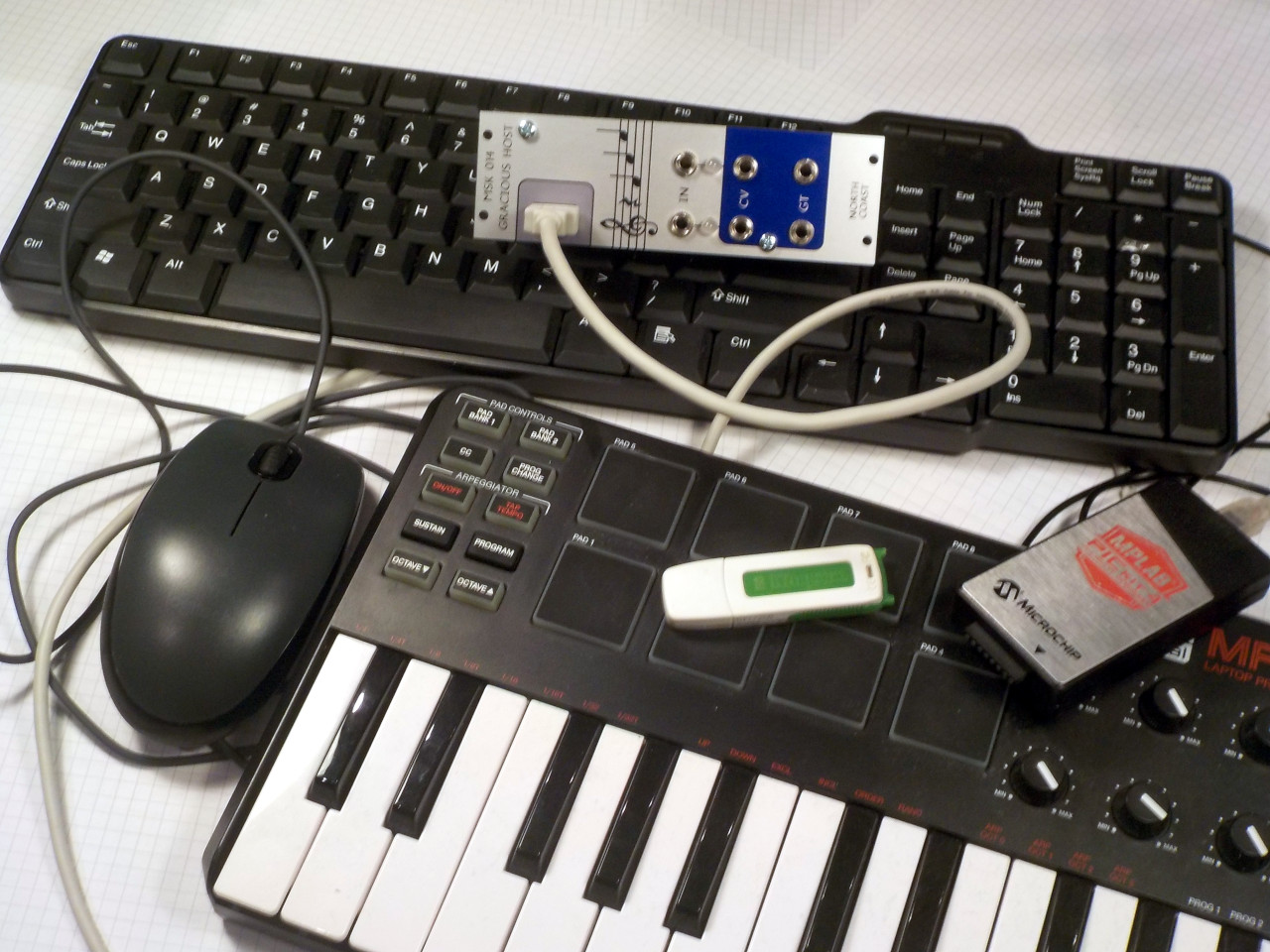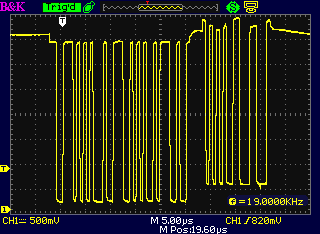tag "MSK 014"
Remote-debugging the Gracious Host
The MSK 014 Gracious Host is meant to work with all standards-compliant USB MIDI devices, but that's often easier said than done. I had some adventures recently when I helped a customer get the Gracious Host running with a Teenage Engineering OP-1 (original, not "Field"), and it makes for a good story. READ MORE
Carmilla
I posted my latest composition project on the audio server a few days ago. It's called the Carmilla suite, and it's a neo-Baroque piece for piano four hands. READ MORE
Building a PIC24F phase meter
Adjusting an MSK 007 Leapfrog VCF to its best possible operation involves a tricky process of feeding in a 740Hz sine wave and measuring phase differences between different test points. I also had reason to measure phase differences in my recent experiments on recognizing fake coins. Although my oscilloscope has a mode for measuring phase differences that works well enough, it can be annoying to use, and I thought it'd be a fun project to build a better tool. READ MORE
Build your own commercial module part 3: firmware and documentation
There's a lot more to a commercial module design than just the physical module that you can touch. If, as is the case with many new designs, the module includes any kind of computer, microcontroller, or other programmable device, then you need to have the program for that device. Usually, the program will be called firmware - software that becomes part of the hardware. Even a module without a conventionally programmable CPU in it may need something like an FPGA bit stream. Even a basically analog design may have some programmable aspect. For instance, my Leapfrog VCF design was originally intended to be programmable for different filter curves by substituting different resistor values on one of the three circuit boards. Creating this intangible programming information is part of creating the module, but also separable from the main task of circuit design. READ MORE
Delta-sigma DACs and CODECs
In the first part of this three-part series on DACs and bit counts, I described what it means to have a certain number of bits in terms of voltage accuracy and signal to noise ratio. Then in the second part I described some ways that DACs are built, basically out of resistors and switches. There are a lot of details along the way, but the big picture in both articles is that you can't really have a DAC with more than about 16 bits. Past that point, the cost of actually building it increases rapidly and the possible benefit drops away. For control voltage generation, the level of absolute voltage accuracy is often closer to 12 bits. READ MORE
DACs, resistors, and switches
In the previous entry, on DACs and bit count, I talked about the relation between how many bits a DAC has and how accurate its voltage can possibly be, both at the limits of modern technology (liquid-helium-cooled superconducting Josephson references) and in the abstract for theoretically perfect DACs. In this entry, let's look at the details of some more realistic DAC designs that would actually be used in Eurorack modules. READ MORE
DACs and bit count
The connections between modules in a modular synthesizer are made with analog voltages, both for audio and control signals. Many popular modules use digital processing internally, but they need to convert to and from analog voltages to communicate with other modules. Even a non-modular synth that might use entirely digital signalling internally, has to convert those signals to analog at some point in order to drive a speaker. So digital to analog converters (DACs), and the corresponding analog to digital converters (ADCs), are important in synthesizers and people say and think many things about them, not all of which are correct. READ MORE
New Gracious Host firmware ideas
The MSK 014 Gracious Host can load alternate firmware from me or third parties, just by reading it off an inserted USB flash drive. Although I conceived this module as primarily a MIDI interface with hosting capability, it's really a general purpose hardware platform with Eurorack control voltage input and output, and it could do many other things beyond hosting USB-MIDI controllers. Here are some ideas I've been looking at for possible alternate firmware or features to add to updated versions of the standard firmware. READ MORE
Gracious Host development adventures
The MSK 014 Gracious Host is planned to be the next new module from North Coast Synthesis, and I've spent a lot of time in the last few months working on the firmware for it. I did most of the hardware design last year, but then shelved it for a while to do more time-sensitive work on module production and custom panels. Here are some pictures and commentary from the ongoing development effort. READ MORE









